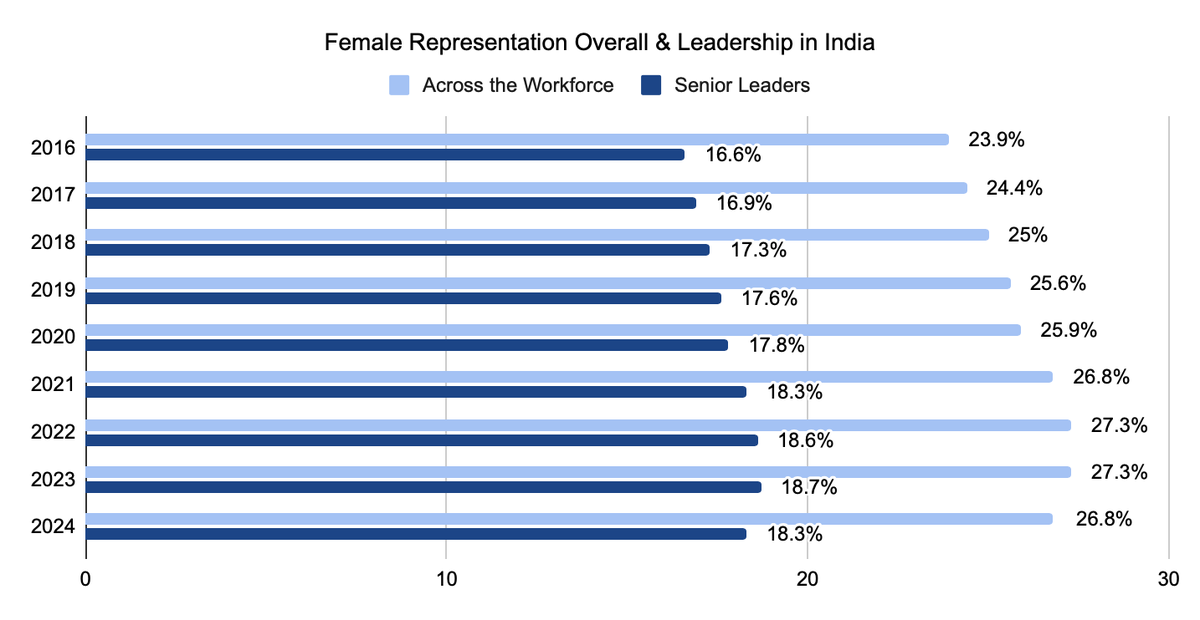Representation of women in corporate roles — which has for long been below 30% in India — has been especially stagnating, and even possibly declining in the post-pandemic years, according to a report by professional social networking platform LinkedIn, ‘Women in Leadership in Corporate India’.
(Source: LinkedIn)
The data is based on LinkedIn members in India, where the firm has over 100 million people registered. Aparajita Bharti, co-founder of The Quantum Hub consultancy that worked with LinkedIn for the report, said that the reduction in the availability of hybrid or work-from-home roles may have contributed to this shift, suppressing the growth of female participation in the corporate labour market.
The company’s data “shows that despite progress, women still face obstacles in reaching leadership roles due to bias, societal norms, and structural barriers,” said Aditi Jha, country head for legal and government affairs at LinkedIn India.
The report cites suggestions such as a ‘skills-first’ approach to hiring (as opposed to making gendered assumptions on what a prospective employee can or cannot do), mentorship and networking opportunities, and shared parental leave.
“Industries such as Education at 30% and Government Administration at 29% have the highest representation of women in leadership roles, followed by Administrative and Support Services and Hospitals and Health Care, each with 23%,” a statement accompanying the report said. “Sectors like Technology, Information, and Media and Financial Services each have moderate female representation in leadership at 19%. The lowest representation is found in Construction, Oil, Gas, and Mining, and Utilities, each with 11% female representation in leadership, while Wholesale and Manufacturing have 12%, and Accommodation and Food Services have 15%.”













